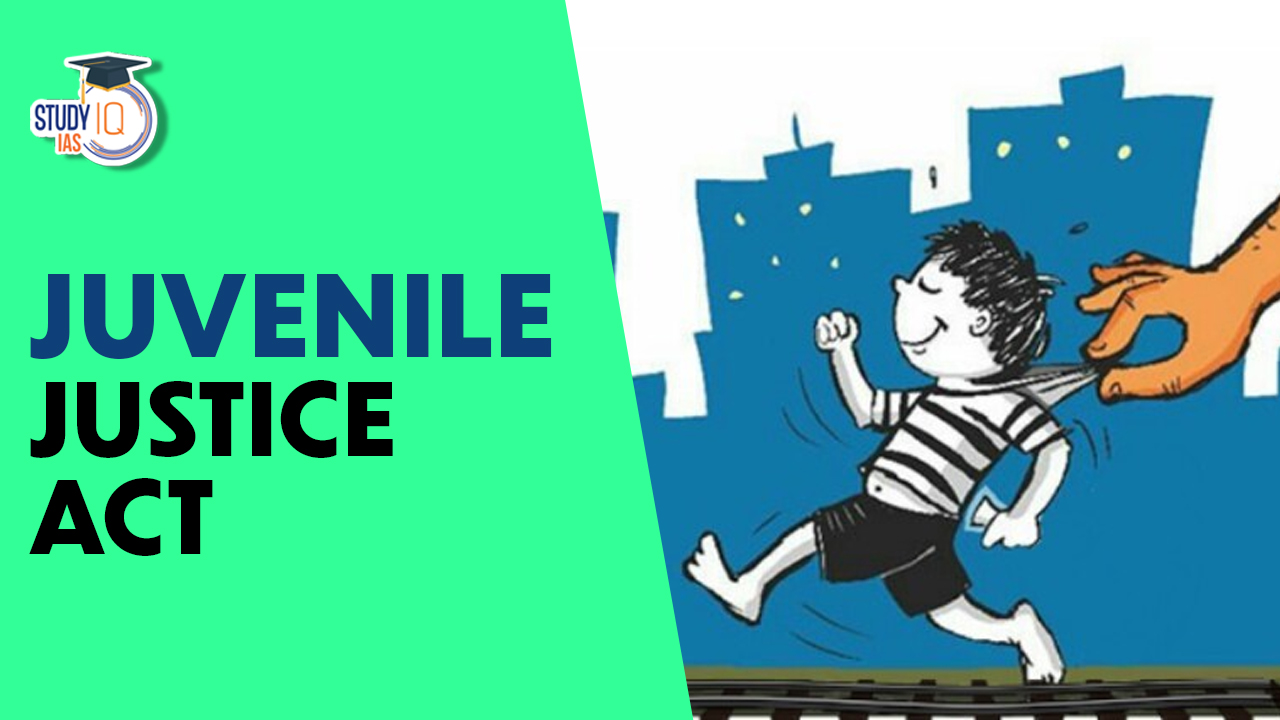Table of Contents
The primary legislation governing the trial of juveniles in India is the Juvenile Justice (Care and Protection of Children) Act, 2015, which was further amended in 2021. This law categorizes offenses into three types: petty, serious, and heinous. Heinous offenses are those that carry a minimum sentence of seven years, reflecting their gravity. Know all about Juvenile Justice Act 2015 in this article.
Pune Porsche Accident
The Pune Porsche accident has sparked significant public and legal debate. A 17-year-old, driving a Porsche at over 160 km/h and allegedly under the influence of alcohol, caused a fatal accident that resulted in the deaths of two software engineers. The incident raised questions about whether the minor should be tried as an adult given the severity of the crime.
Juvenile Justice Act
- Government Initiative: The Indian government introduced the Juvenile Justice Act to address issues in the existing juvenile justice framework.
- Approval: Approved by the Lok Sabha in August 2014.
- Operational Issues: The previous Juvenile Justice Act of 2000 faced operational challenges and delays in prosecution.
- Crime Statistics: NCRB data indicated a rise in crimes committed by minors, particularly those aged 16 to 18. From 2003 to 2013, the proportion of adolescent criminal offenses to all offenses increased from 1% to 1.2%.
Juvenile Justice Act Background
The Delhi Commission for the Protection of Child Rights (DCPCR), which was formed by the merger of three state child rights commissions from Bengal, Rajasthan, and Punjab, urged the Union government to undo an amendment to the Juvenile Justice Act that labels some crimes against children as not being punishable by law.
Per the President’s accepted changes, the Juvenile Justice Act of 2015 (Care and Protection of Children) entered into force in 2021. Prior to this, the 2020 evaluation of Child Care Institutions (CCIs) by the National Commission for the Protection of Child Rights (NCPCR) showed significant issues with the management of childcare facilities.
Juvenile Justice Act 2015
The Act, which was proposed and approved by Parliament in 2015, repealed the Juvenile Delinquency Law and the Juvenile Justice Act 2000 (Care and Protection of Children Act). It allowed cases where the crimes needed to be determined to be committed by juveniles between the ages of 16 and 18 to be tried as adults.
Key Features of the Juvenile Justice Act, 2015
- Classification of Offenses:
- Petty Offenses: Minor crimes with lighter sentences.
- Serious Offenses: Crimes with a maximum punishment of up to seven years.
- Heinous Offenses: Crimes with a minimum punishment of seven years.
- Juvenile Justice Board (JJB):
- Assessment Role: The JJB conducts preliminary assessments for juveniles aged 16 to 18 involved in heinous crimes to determine if they should be tried as adults.
- Expert Involvement: Includes psychologists and child experts to aid in assessments.
- Children’s Court:
- Transfer of Cases: Cases involving juveniles tried as adults are transferred to the Children’s Court.
- Trial Procedures: Ensures appropriate procedures are followed for juveniles tried as adults.
- Focus on Rehabilitation:
- Reformative Measures: Emphasis on rehabilitation through counseling, education, and skill development.
- Observation and Special Homes: Facilities for housing and rehabilitating juveniles.
- Legal Aid:
- Counsel Provision: Legal aid counsel is provided to juveniles through the District Legal Services Authority.
- Support During Assessment: Counsel presence is mandatory during the preliminary assessment by the JJB.
- Data and Reporting:
- Social Investigation Report (SIR): Prepared by probation officers or social workers, detailing the juvenile’s background.
- Social Background Report (SBR): Includes information gathered from interactions with the juvenile and their family.
- Provisions for Heinous Crimes:
- Trial as Adults: Juveniles aged 16 to 18 committing heinous offenses may be tried as adults.
- Protection Mechanism: Ensures that juveniles are not placed in adult jails during the trial process.
- Legislative Amendments:
- Post-2012 Reforms: Amendments post the 2012 Delhi gang-rape case to handle juvenile offenders involved in serious crimes more effectively.
Positives of the Juvenile Justice Act, 2015
- Focus on Rehabilitation and Reformation:
- Rehabilitative Approach: Emphasizes the rehabilitation and reformation of juvenile offenders rather than mere punitive measures.
- Skill Development: Provides opportunities for education and skill development to aid in the reintegration of juveniles into society.
- Age-Specific Provisions:
- Differentiated Treatment: Distinguishes between different age groups, ensuring that younger children receive protection and care, while older juveniles involved in serious crimes can be assessed for trial as adults.
- 16-18 Age Group Assessment: Allows for the possibility of trying juveniles aged 16-18 as adults for heinous offenses, ensuring accountability for serious crimes.
- Comprehensive Assessment by Juvenile Justice Board (JJB):
- Preliminary Assessments: JJB conducts detailed preliminary assessments to determine if juveniles should be tried as adults, considering mental and physical capacity, understanding of consequences, and circumstances of the offense.
- Expert Involvement: Involves psychologists and child experts in the assessment process to ensure a fair and thorough evaluation.
- Enhanced Protection Mechanisms:
- Legal Aid Provision: Ensures that juveniles have access to legal aid counsel through the District Legal Services Authority, safeguarding their rights during assessments and trials.
- Specialized Facilities: Establishes observation and special homes for the care and rehabilitation of juveniles, keeping them separate from adult offenders.
- Streamlined Processes and Timely Prosecution:
- Addressing Operational Issues: Aims to resolve the operational challenges and delays faced under the previous Juvenile Justice Act of 2000.
- Efficient Legal Proceedings: Transfers cases of juveniles tried as adults to the Children’s Court, ensuring that these cases are handled with appropriate seriousness and efficiency.
- Incorporation of Social Reports:
- Social Investigation Reports (SIR): Detailed reports prepared by probation officers or social workers, providing comprehensive background information on the juvenile.
- Social Background Reports (SBR): Additional insights gathered through interactions with the juvenile and their family, aiding in informed decision-making.
- Protection of Child Rights:
- Child-Centric Approach: Ensures that the welfare and rights of children are at the forefront, balancing the need for justice with the principles of child protection and development.
- Focus on Minor Offenses: Provides mechanisms for handling petty and serious offenses with rehabilitative measures rather than harsh punishments.
- Enhanced Accountability for Heinous Crimes:
- Trial as Adults for Heinous Offenses: Juveniles involved in heinous crimes can be tried as adults, ensuring that serious offenses are met with appropriate legal responses.
- Balancing Act: The provision to try older juveniles as adults serves as a deterrent while still maintaining a focus on rehabilitation for less severe offenses.
- Legal and Social Reforms:
- Post-2012 Reforms: Reflects the societal demand for stricter juvenile justice laws following high-profile cases like the 2012 Delhi gang-rape.
- Legislative Clarity: Provides clear guidelines and a structured approach to dealing with juvenile offenders, addressing both legal and social dimensions of juvenile justice.
Negatives of Juvenile Justice Act, 2015
- Harsh Sentencing Risks:
- Allows juveniles aged 16-18 to be tried as adults for heinous crimes, potentially leading to severe punishments that may overlook their rehabilitative needs.
- Inconsistent application due to discretionary powers of the Juvenile Justice Board (JJB).
- Subjective Preliminary Assessments:
- Assessments of mental and physical capacity by the JJB can be subjective and inconsistent.
- Resource and expertise limitations may hinder accurate assessments.
- Rehabilitation Challenges:
- Trying juveniles as adults may hinder rehabilitation and increase recidivism.
- Stigmatization can impede reintegration into society post-incarceration.
- Psychological Impact:
- Adult trial processes can be traumatic for juveniles, affecting their mental health.
- Exposure to adult criminals may lead to negative influences and behaviors.
- Lack of Uniformity and Clarity:
- Variable interpretations and applications of the Act across jurisdictions.
- Legal ambiguities in defining and categorizing offenses.
- Insufficient Preventive Measures:
- Focuses more on post-crime treatment rather than robust prevention strategies.
- Lacks emphasis on community-based programs to prevent juvenile delinquency.
- Overburdened System:
- Resource constraints and case overloads lead to delays and compromised care.
- Inadequate infrastructure and rehabilitation programs in juvenile facilities.
- Conflict with International Standards:
- Some provisions may violate international child rights standards, such as the UNCRC.
- Criticism from child rights activists and international bodies.
- Social and Ethical Concerns:
- Moral dilemma between ensuring public safety and providing second chances to juveniles.
- Public pressure for harsher punishments in high-profile cases may influence the objective application of the Act.
Way Forward
To improve the Juvenile Justice Act, 2015, prioritize rehabilitation and ensure uniform application. Provide specialized training and resources for assessments, enhance community prevention programs, and invest in separate facilities for juveniles. Align the Act with international standards, enhance legal aid, and support systems. Conduct public awareness and sensitization campaigns. Strengthen data collection and research on juvenile delinquency. Continuous review and updates will ensure a balanced approach, focusing on both accountability and rehabilitation.


 NCERT Books for UPSC Preparation, Check ...
NCERT Books for UPSC Preparation, Check ...
 UPSC Syllabus 2025, Check UPSC CSE Sylla...
UPSC Syllabus 2025, Check UPSC CSE Sylla...
 UPSC Mains Syllabus 2025, Optional Sylla...
UPSC Mains Syllabus 2025, Optional Sylla...





















